EE 2100MHz Spectrum Overview
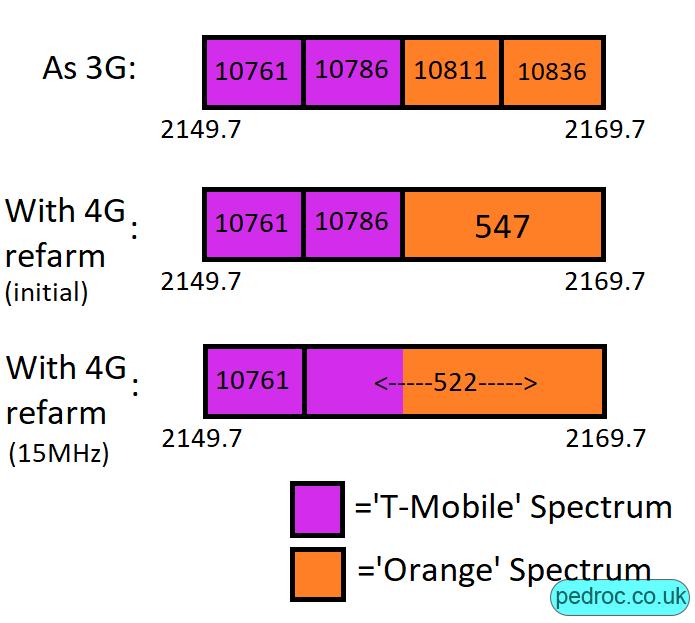
EE was formed from the merger of Orange and T-Mobile who each had 10MHz paired of 2100MHz (FDD) and therefore operated two 3G carriers on the band: UARFCNs 10761 and 10786 were operated by T-Mobile and 10811 and 10836 by Orange. The T-Mobile network was broadly favoured by EE during the consolidation process and therefore 10761 and 10786 remained as the base carriers, while 10811 and 10836 were, and are, for high load urban areas only. However, with the increasing penetration of 4G devices and calling over 4G (VoLTE), load on 3G has decreased and on 4G has increased, making reuse the most efficient use of spectral assets. As the Orange carriers are "extra" 3G capacity, instead of base, it therefore makes sense to refarm them first, which is what EE has done, converting 10811 and 10836 to the LTE carrier of EARFCN 547. As of August 2018, the L21 has been widened to 15MHz on some sites, swallowing up 10786 to refarm as well.
Huawei's 5507 Series Dual band RRUs
Huawei recently launched dual band RRUs capable of emitting 1800MHz and 2100MHz simultaneously from the same unit. They are software defined radios so can operate multiple radio access technologies on each frequency, either individually or simultaneously ie 2G and/or 4G on 1800MHz and 3G and/or 4G on 2100MHz all at the same time. They are 2T4R but can be paired up on each sector to do 4T4R on both bands. Their IBW is 40MHz per band, which is just a tad below EE's holdings for 1800MHz but is significantly above for 2100MHz.
A typical mast layout
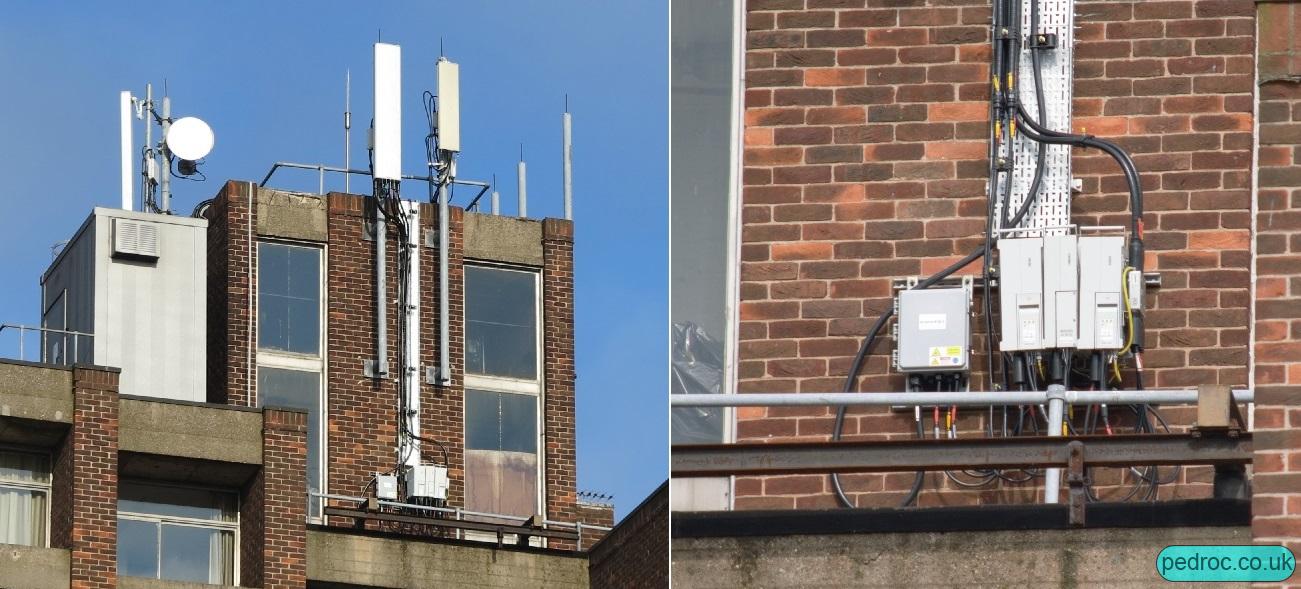
These sites come in a number of different configurations. This site has a pair of antennas per sector: a Kathrein dual high band 8001050v01 or similar and a Huawei Quad band AQU4518R11v06 or similar. The former currently radiates 3's 4G 1800MHz, 3's 3G 2100MHz and probably EE's 3G 2100MHz. The Kathrein antennas would have previously carried the 1800MHz 2G/4G for EE but this has now moved onto the new Huawei antennas, fed by the dual band Huawei 5507 RRUs. Alongside the 5507, there are also Huawei 3262 for 2T4R 4G 2600MHz. The Huawei antennas have three high bands and therefore diplexors are used to feed two of the antenna ports from one 5507 and two of the feeders from the 3262. With a lot of diplexing, it is possible to have EE GL18, UL21, L26 and 3 UL21, L18 all on a triple band antenna.
All in all, a lot of spectrum!
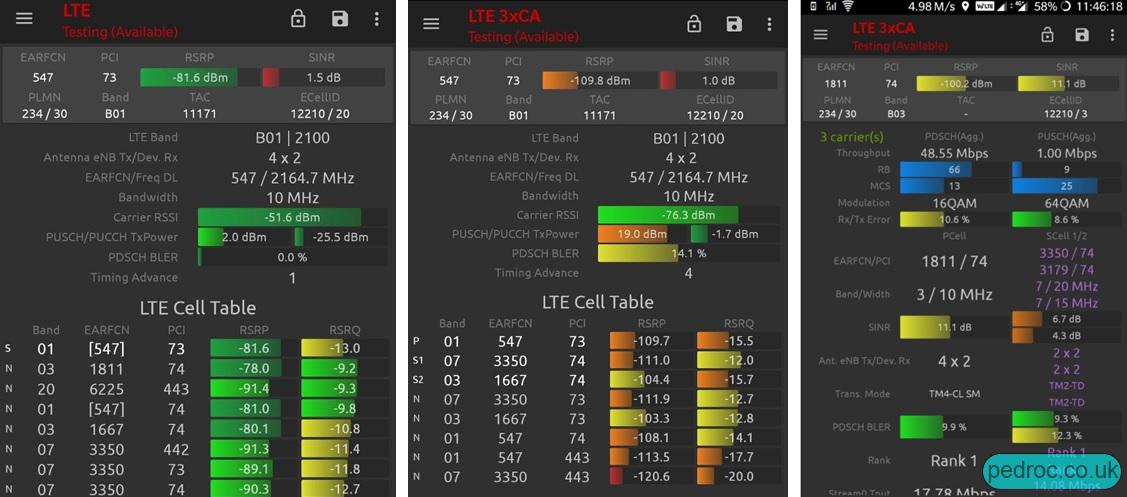
Cardiff had a metric ton of 4G spectrum on EE prior to the 2100MHz refarm with 800MHz 2x5MHz (6225), 1800MHz 2x30MHz (1667 20MHz, 1811 10MHz), 2600MHz 2x35MHz (3350 20MHz, 3179 15MHz), totalling 2x70MHz.
With the 4G 2100MHz, this increases the 4G deployment to 2x80MHz, an astonishing amount!
The band 1 spectrum uses sector IDs: 18,19 and 20.
Widens to 15MHz
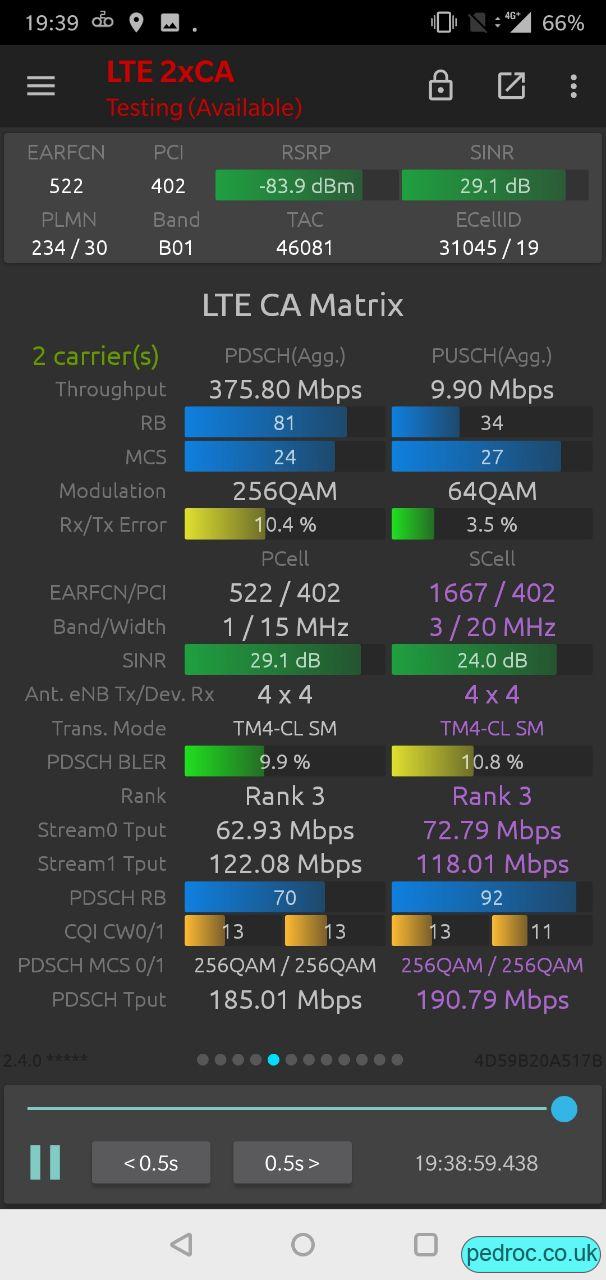
As of August 2018, the L21 has been widened to 15MHz on some sites in Hull, swallowing up 10786 to refarm as well. In London, 10786, 10811 and 10836 have suddenly vanished in large parts of multiple zones so I expect 15MHz l21 will be appearing there soon. Thanks to Matthew for finding the 15MHz refarm.
EE 5CA with band 1

Areas with sites that have all 5 LTE carriers (547,1667,1811,3179,3350) also have 5CA enabled on them.
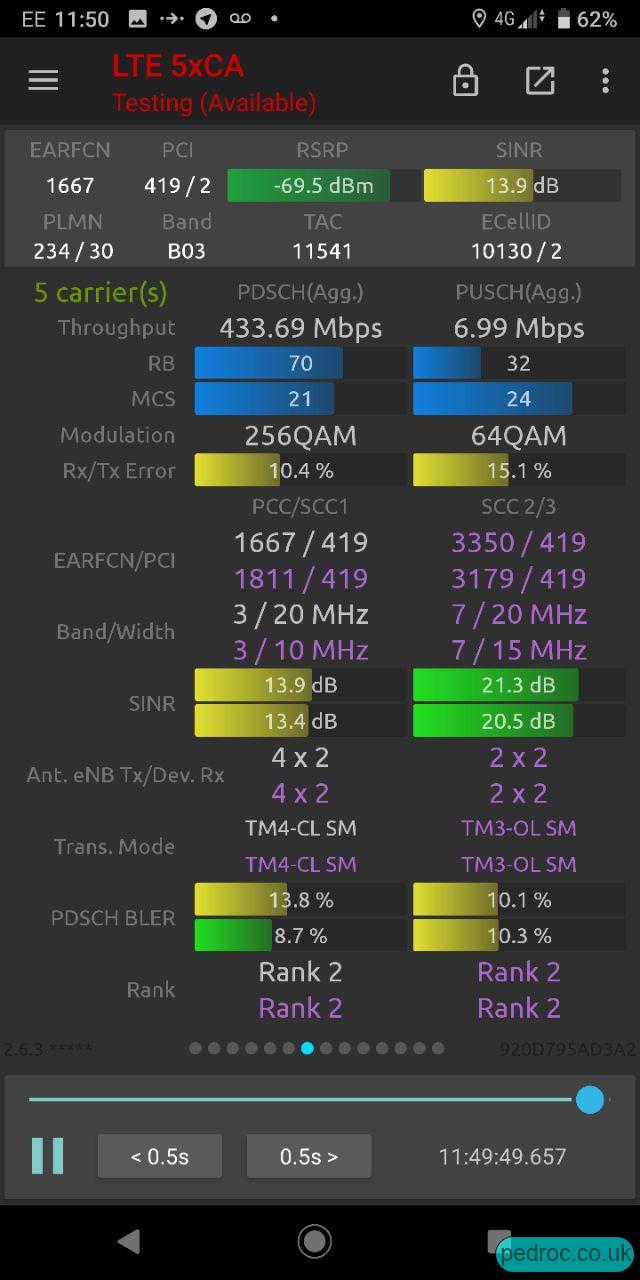
Lots of sites in London have 5CA now with bands 1 and 3 being 4T4R.
Video
Thanks
Thanks to Jake @AD_couk for visiting Cardiff, collecting screenshots and taking the photos.